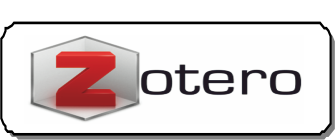Upaya Pengendalian Kenakalan Remaja di Sekolah Menengah Atas Negeri (SMAN) Kabupaten Kutai Timur dalam Perspektif Pendidikan Islam
Abstract
The purpose of this study is to explore information about the forms of juvenile delinquency, factors that influence the occurrence of juvenile delinquency, and the efforts made by the school in controlling juvenile delinquency. The object in this study is the State High School (SMAN) in East Kutai Regency: SMAN 1 Sangatta Utara and SMAN 1 Sangatta Selatan. The approach used in this study is a qualitative research approach, with data collection techniques using interviews, observation and documentation. The results of the study show that the form of juvenile delinquency is mostly a form of juvenile delinquency in the case of violating school rules and violating regulations in the community. The factors that cause delinquency are due to external factors and individual internal factors. Efforts that have been made by schools in controlling juvenile delinquency is by preventive, repressive and curative manner.
References
Pardeck, Jean A., dan John T. Pardeck. 1990. “Family factors related to adolescent autonomy.” Family Therapy: The Journal of the California Graduate School of Family Psychology 17 (3).
Petersen, Anne C. 1988. “Adolescent development.” Annual review of psychology 39 (1): 583–607.
Santrock, John W. 1987a. Adolescence: an introduction. Wm C Brown Publishers.
———. 1987b. “The effects of divorce on adolescents: Needed research perspectives.” Family therapy 14 (2): 147.
Syafii, Ahmad. 2009. “Pengaruh Narkoba Terhadap Kenakalan Remaja di Sulawesi Tengah.” Media Litbang Sulteng 2 (2).
Widjaya, A. W. 1985. Masalah kenakalan remaja dan penyalahgunaan narkotika. Armico.
Please find the rights and licenses in SYAMIL Jurnal Pendidikan Agama Islam (Journal of Islamic Education). By submitting the article/manuscript of the article, the author(s) agree with this policy. No specific document sign-off is required.
1. License
The non-commercial use of the article will be governed by the Creative Commons Attribution license as currently displayed on Creative Commons Attribution-ShareAlike 4.0 International License.
2. Author(s)' Warranties
The author warrants that the article is original, written by stated author(s), has not been published before, contains no unlawful statements, does not infringe the rights of others, is subject to copyright that is vested exclusively in the author and free of any third party rights, and that any necessary written permissions to quote from other sources have been obtained by the author(s).
3. User/Public Rights
SYAMIL spirit is to disseminate articles published are as free as possible. Under the Creative Commons license, SYAMIL permits users to copy, distribute, display, and perform the work for non-commercial purposes only. Users will also need to attribute authors and Register on distributing works in the journal and other media of publications. Unless otherwise stated, the authors are public entities as soon as their articles got published.
4. Rights of Authors
Authors retain all their rights to the published works, such as (but not limited to) the following rights;
Copyright and other proprietary rights relating to the article, such as patent rights,
The right to use the substance of the article in own future works, including lectures and books,
The right to reproduce the article for own purposes,
The right to self-archive the article (please read out deposit policy),
The right to enter into separate, additional contractual arrangements for the non-exclusive distribution of the article's published version (e.g., post it to an institutional repository or publish it in a book), with an acknowledgment of its initial publication in this journal (SYAMIL Jurnal Pendidikan Agama Islam (Journal of Islamic Education)).
5. Co-Authorship
If the article was jointly prepared by more than one author, any authors submitting the manuscript warrants that he/she has been authorized by all co-authors to be agreed on this copyright and license notice (agreement) on their behalf, and agrees to inform his/her co-authors of the terms of this policy. SYAMIL will not be held liable for anything that may arise due to the author(s) internal dispute. SYAMIL will only communicate with the corresponding author.
6. Royalties
Being an open accessed journal and disseminating articles for free under the Creative Commons license term mentioned, author(s) aware that SYAMIL entitles the author(s) to no royalties or other fees.
7. Miscellaneous
SYAMIL will publish the article (or have it published) in the journal if the article’s editorial process is successfully completed. SYAMIL editors may modify the article to a style of punctuation, spelling, capitalization, referencing and usage that deems appropriate. The author acknowledges that the article may be published so that it will be publicly accessible and such access will be free of charge for the readers as mentioned in point 3.












